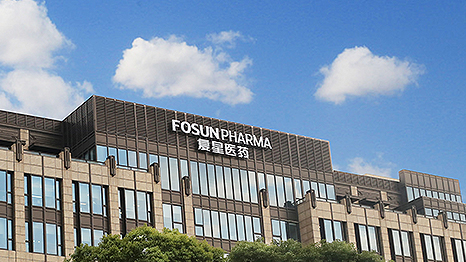复宏汉霖贝伐珠单抗新应用,眼科适应症获澳大利亚临床批准

Shanghai, China, Jan, 29th, 2021 - Shanghai Henlius Biotech, Inc. (2696.HK) announced that the filing of clinical trial for HLX04-O, a recombinant anti-VEGF humanized monoclonal antibody ophthalmic injection, for the treatment of wet age-related macular degeneration (wAMD) has been approved by the Therapeutic Goods Administration, Australia. The Phase 3 clinical study of the project in Australia is intended to be initiated in the near future.
Age-related macular degeneration is one of the leading causes of blindness in the elderly worldwide[1]. According to the World Health Organization (WHO), about 30 million people have suffered from AMD globally, and about half a million people become blind due to AMD each year[2]. Wet age-related macular degeneration (wAMD) is characterized by the formation of subretinal choroidal neovascularization (CNV) and is responsible for approximately 90% of cases of AMD-related blindness. Due to an aging population, wAMD has become a serious social medical problem and indicated a huge burden of unmet need[3]. With the development of treatment for fundus diseases, anti-VEGF drugs are becoming the first-line therapy for the management of wAMD[4], and the efficacy and safety of vitreous injection of bevacizumab for wAMD have been verified in multiple clinical studies-6.
HLX04-O is a recombinant anti-VEGF humanized monoclonal antibody ophthalmic injection constructed using genetic engineering technology independently developed by Henlius. HLX04-O can inhibit VEGF’s binding to its receptor Flt-1(VEGFR-1) and KDR(VEGFR-2) on endothelial cells to inhibit the activation of its tyrosine kinase signaling pathway, inhibit endothelial cell proliferation and reduce angiogenesis, thereby treating eye diseases associated with angiogenesis. According to the requirements of ophthalmic drugs, the Company has developed HLX04-O which optimizes the prescription, specifications and production processes of HLX04, assuming that the active ingredients remain unchanged. Through a series of comparability analysis, it is proved that the changes in the production process and prescription of the preparation have no adverse impact on the quality, safety and efficacy of the preparation.
As of now, a series of studies including non-clinical pharmacodynamics, safety pharmacology, repeat-dose toxicity, pharmacokinetics, toxicokinetics, immunotoxicity, immunogenicity and local irritation of HLX04-O vitreous injection in the treatment of wAMD have been carried out, initially proving the efficacy and safety of HLX04-O. In the near future, a two-part, Phase 3, global, multicentre study of HLX04-O will be initiated in Australia to further evaluate the efficacy and safety in treatment of wAMD.
It is believed that Henlius and Essex will speed up the global multicentre clinical trials of HLX04-O in China, Australia, the European Union and the United States and apply marketing authorization in different countries and regions around the globe based on the research results. HLX04-O has the potential to be one of the first bevacizumabs approved for ophthalmic diseases, benefiting more patients with eye diseases worldwide. Looking forward, Henlius will continue advancing the development of innovative biologics on the basis of its established and integrated innovation platform, underscoring its long-term commitment to providing affordable and effective therapies for patients worldwide.
About Henlius
Henlius (2696.HK) is a global biopharmaceutical company with the vision to offer high-quality, affordable and innovative biologic medicines for patients worldwide with a focus on oncology, autoimmune diseases and ophthalmic diseases. Since its inception in 2010, Henlius has built an integrated biopharmaceutical platform with core capabilities of high-efficiency and innovation embedded throughout the whole product life cycle including R&D, manufacturing and commercialisation. It has established global R&D centers and a Shanghai-based manufacturing facility certificated by China and the European Union (EU) Good Manufacturing Practice (GMP).
Henlius has pro-actively built a diversified and high-quality product pipeline covering over 20 innovative monoclonal antibodies (mAbs) and has continued to explore immuno-oncology combination therapies with proprietary HLX10 (anti-PD-1 mAb) as backbone. Up to date, Henlius has launched three mAbs developed independently: 汉利康® (HLX01, rituximab), the first China-developed biosimilar, 汉曲优® (HLX02, trastuzumab, Zercepac® in the EU), the first China-developed mAb biosimilar approved both in China and in the EU and 汉达远® (HLX03, adalimumab), the Company's first product indicated for autoimmune diseases. In addition, the New Drug Applications of HLX04 (bevacizumab) and HLX01 (rituximab) for the treatment of rheumatoid arthritis are under review, and Henlius has conducted over 20 clinical studies for 10 products and 8 combination therapies worldwide, expanding its presence in major market as well as emerging market.
参考文献
[1] 欧阳灵艺, 邢怡桥. 抗VEGF药物在湿性年龄相关性黄斑变性中的应用进展[J]. 国际眼科杂志, 2020(1).
[2] Resnikoff S, Pascolini D, Etya'ale D, Kocur I, Pararajasegaram R, Pokharel GP, Mariotti SP. Global data on visual impairment in the year 2002. Bull World Health Organ. 2004 Nov;82(11):844-51.
[3] Wong WL, Su X, Li X, et al. Global prevalence of age-related macular degeneration and disease burden projection for 2020 and 2040: a systematic review and meta-analysis. Lancet Glob Health. 2014;2(2):e106-116.
[4] Li X R , Liu J P . Recognition of anti-VEGF therapy base on the mechanism of VEGF in wet age-related macular degeneration[J]. Zhonghua Shiyan Yanke Zazhi/Chinese Journal of Experimental Ophthalmology, 2012, 30(4):289-292.
[5] Tufail A, Patel PJ, Egan C, Hykin P, da Cruz L, Gregor Z, Dowler J, Majid MA, Bailey C, Mohamed Q, Johnston R, Bunce C, Xing W; ABC Trial Investigators. Bevacizumab for neovascular age related macular degeneration (ABC Trial): multicentre randomized double masked study. BMJ. 2010 Jun 9;340:c2459.
[6] Martin DF, Maguire MG, Ying GS, Grunwald JE, Fine SL, Jaffe GJ. Ranibizumab and bevacizumab for neovascular age-related macular degeneration. N Engl J Med. 2011 May 19;364(20):1897-908.
[7] Chakravarthy U, Harding SP, Rogers CA, Downes SM, Lotery AJ, Wordsworth S, Reeves BC. Ranibizumab versus bevacizumab to treat neovascular age-related macular degeneration: one-year findings from the IVAN randomized trial. Ophthalmology. 2012 Jul;119(7):1399-411.
[8] Kodjikian L, Souied EH, Mimoun G, Mauget-Faÿsse M, Behar -Cohen F, Decullier E, Huot L, Aulagner G; GEFAL Study Group. Ranibizumab versus Bevacizumab for Neovascular Agerelated Macular Degeneration: Results from the GEFAL Noninferiority Randomized Trial. Ophthalmology. 2013 Nov;120(11):2300-9.
[9] Krebs I, Schmetterer L, Boltz A, Told R, Vécsei-Marlovits V, Egger S, Schönherr U, Haas A, Ansari-Shahrezaei S, Binder S; MANTA Research Group. A randomized double-masked trial comparing the visual outcome after treatment with ranibizumab or bevacizumab in patients with neovascular age-related macular degeneration. Br J Ophthalmol. 2013 Mar;97(3):266-71.
[10] Berg K, Pedersen TR, Sandvik L, Bragadóttir R. Comparison of ranibizumab and bevacizumab for neovascular age-related macular degeneration according to LUCAS treat-and-extend protocol. Ophthalmology. 2015 Jan;122(1):146-52.
[11] Schauwvlieghe AM, Dijkman G, Hooymans JM, Verbraak FD, Hoyng CB, Dijkgraaf MG,Peto T, Vingerling JR, Schlingemann RO. Comparing the Effectiveness of Bevacizumab to Ranibizumab in Patients with Exudative Age-Related Macular Degeneration. The BRAMD Study. PLoS One. 2016 May 20;11(5):e0153052.





